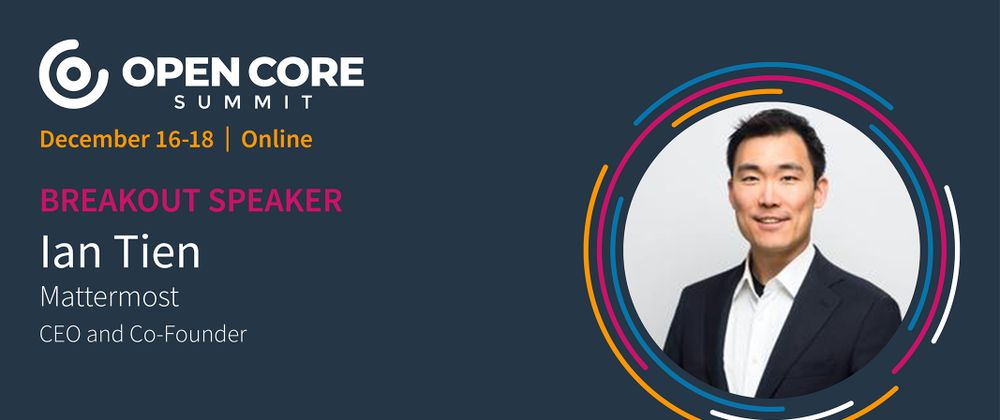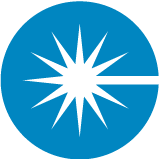Ian Tien is CEO and co-founder of Mattermost, Inc., a high trust, open source Slack-alternative empowering enterprise DevOps and InfoSec teams to increase safety, efficiency, and innovation. He was previously an engineering leader in Microsoft Office, where he earned over a dozen patents. Ian is an alumnus of Waterloo, Cornell and Stanford Business School, where he served as a teaching assistant for Andy Grove and Myron Scholes.
Relevant Links
[LinkedIn (https://www.linkedin.com/in/iantien/) - Twitter
This session is a crash course in how to build an open core business. When we created Mattermost, we had no experience building open source.
Mattermost’s formation was different than most open-source companies. Can you share how Mattermost began? — 0:17
Ian describes Mattermost starting as a video game in YC S12, and a remote company, which used as a messaging platform to communicate everyday.
Platform got bought out by larger company, and became unreliable. Company tried to leave the platform, but they wouldn’t let Mattermost export data, and after Mattermost stopped paying subscription, they pay-walled Mattermost from their own data.
Realized as a video game company, with messaging in games, they could build a messaging tool.
Started using it internally, decided to open-source it in 2015, and it took off. People loved it.
It was growing so fast that they pivoted company from video games to working on that tool, and rolled out first commercial product in 2016 as an open core company, and received initial funding.
How did you decide on open core? — 2:04
Ian walks through different models of OSS monetization, including services, hosting, and open core.
Speaks about the popularity of the open core model and its tendency to build big businesses, which led to Mattermost’s decision to use that model.
Tell me about your go-to-market strategy as an open-core company. — 2:50
“As an open core company, our superpower is in appealing to developers. We often see developer-to-business go-to-markets.”
Ian speaks about how developers discover Mattermost, escalates service to IT and SysAdmins, who make purchase decisions, but only after product has proven its value.
How does open core impact your ability to build a community? — 5:07
Ian discusses pros and cons of different business models. Explores the hypothesis of open core negativity, and what attracts contributors to the open-core project -- especially around the ability for contributors to make a large-scale impact.
How does open core help you differentiate in the marketplace? — 6:46
Ian discusses the importance of Slack being acquired. This completed the first chapter of communications, and the second chapter will be even higher impact.
1.25 billion information workers are mostly working remote and looking for different ways to collaborate.
The opportunity for information is larger than ever. About re-imagining how pieces come together, including messaging.
Sees open core as advantage for 3 reasons. (1) Openness, which enables greater influence. (2) Modern architecture, fundamental to idea of trust in messaging. Open core provides range of options. (3) Developer-centricity. Developers are early adopters of the new technology that comes every generation.
Ian sees themselves as the last pure play.
Can you share use cases and examples of where companies would use Mattermost over Microsoft Teams or Slack? — 10:02
Ian focuses on use cases for software builders and operators, and the ability to bring usability and innovation to those worlds.
“Mattermost is hub of your people, your tools, and your most mission-critical systems in one place. That is one of the most popular use cases that we see.”
What are some do’s and dont’s of open core? — 11:22
Ian speaks about criticisms of open core when it isn’t done correctly — importance of being buyer-based, and elaborates on the buyer-based concept.
“Each option has a separate persona, a separate target audience, a separate buyer. Even the free one has a buyer who uses their time to go and use the open source. Buyer-based open core means you’re not trying to monetize the free user. The developer is the free user, you never want to monetize that. … The paid features are in a separate skin that’s not for them. … Being clear on the value prop for each of these different personas is very powerful.”
“The don’t is, don’t try to get 1% of your developer audience to monetize, because it’s unnatural and people don’t realize that.”
Do: Buyer-based open-core.
Don’t: Try to monetize 1% of your developer audience.
What advice would you give B2B companies in harnessing the value of the open-core approach? — 13:30
Ian speaks first about the importance of attending Open Core Summit and learning there.
Next, Ian highlights speaking about learning from open core founders and business models.
Speaks about the fear and anxiety around open source, and the importance of every enterprise (especially B2B) having an open-source thought leader. “If they don’t do that quickly, the market is going to pass them.” Relevant to keeping developers and talent and staying ahead of the curve.
Share your questions and comments below!



Latest comments (0)